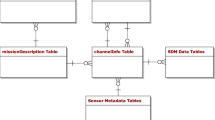Abstract
A data structure called the primogenitary linked quad tree is developed. Each node in the data structure has a pointer to its parent, a pointer to its immediate existing younger sibling, a pointer to its eldest existing son, and an integer as its successorship to its parent. To access any other son of a node, the first-born existing son must be accessed first. The siblings of the same parent are managed as a linked list. This data structure is an extension or enhancement of the traditional quad tree data structure. The primogenitary linked quad tree is applied to discrete multiple criteria optimization for the identification, storage, and retrieval of nondominated criterion vectors. Algorithms managing this data structure are developed and implemented. Major advantages of using the primogenitary linked quad tree instead of the traditional quad tree are savings in memory or storage space and savings in execution time. Examples are provided to demonstrate the application. A computational experiment is conducted to test the performances of the data structure and the algorithms. Computational results show that this data structure uses only a small fraction of the CPU time used by the traditional quad tree to perform the same task. Using this data structure, the identification, storage and retrieval of nondominated criterion vectors become an easy task for discrete multiple criteria optimization problems with many criteria and hundreds of thousands criterion vectors. This data structure can also be used for storage and retrieval of data with composite keys in other applications.
Similar content being viewed by others
References
Allada, V. and S. Anand. (1992). “Manufacturing Applications of Octress.” Computers & Industrial Engineering, 23(1–4), 37–40.
Bao, Z. and H. Grabowski. (1998). “Converting Boundary Representations to Exact Bintrees.” Computers in Industry, 37(1), 55–66.
Bern, M. (1993). “Approximate Closest-Point Queries in High Dimensions.” Information Processing Letters, 45(2), 95–99.
Borges, P.C. (2000). “CHESS–Changing Horizon Efficient Set Search: A Simple Principle for Multiobjective Optimization.” Journal of Heuristics, 6(3),405–418.
Chen, D.Z., R.J. Szczerba, and J.J. Uhran. (1997). “A Framed-Quadtree Approach for Determining Euclidean Shortest Paths in a 2-D Environment.” IEEE Transactions on Robotics and Automation, 13(5), 668–681.
Chung, K.-L. and W.-M. Yan. (2001). “An Efficient Algorithm for the Fourier Transform on a Compressed Image in Restricted Quadtree and Shading Format.” Information Processing Letters, 75(1), 1–5.
Finkel, R.A. and J.L. Bentley. (1974). “Quad-Trees, a Data Structure for Retrieval on Composite Keys.” Acta Informatica, 4, 1–9.
Finnigan, P., A. Hathaway, and W. Lorensen. (1990). “Merging CAT and FEM.” Mechanical Engineering, 112(7), 32–38.
Habenicht, W. (1982). “Quad Trees, A Datastructure for Discrete Vector Optimization Problems.” Lecture Notes in Economics and Mathematical Systems, 209, 136–145.
Habenicht, W. (1991). “ENUQUAD an Enumerative Approach to Discrete Vector Optimization Problems.” Presented at the International Workshop on Multicriteria Decision Making: Methods, Algorithms and Applications, Liblici, Czechoslovakia.
Lee, C.-F. and C.-C. Chang. (2000). “Breadth-First Search Oriented Symbolic Picture Representation for Spatial Match Retrieval.” The Journal of Systems and Software, 52(1), 11–23.
Lee, W.S. (2000). “Tiling and Adaptive Image Compression.” IEEE Transactions on Information Theory, 46(5), 1789–1799.
Markas, T. and J. Reif. (1992). “Quad Tree Structures for Image Compression Applications.” Information Processing and Management, 28(6), 701–715.
Pemmaraju, S.V. and C.A. Shaffer. (1994). “Analysis of the Worst Case Space Complexity of a PR Quadtree.” Information Processing Letters, 49(5), 263–267.
Roberts, S.A., M.N. Gahegan, J. Hogg, and B. Hoyle. (1991). “Application of Object-Oriented Databases to Geographic Information Systems.” Information and Software Technology, 33(1), 38–46.
Samet, H., C.A. Shaffer, and R.E. Webber. (1987). “Digitizing the Plane with Cells of Nonuniform Size.” Information Processing Letters, 24(6), 369–375.
Saxena, M. and R.K. Irani. (1993). “Knowledge-Based Modeling of Turbine Nozzles.” Mechanical Engineering, 115(7), 84–90.
Steuer, R.E. (1986). Multiple Criteria Optimization: Theory, Computation, and Application. New York: John Wiley and Sons.
Stubbs, D.F. and N.W. Webre. (1987). Data Structure with Abstract Data Types and Modula-2. Brooks/Cole, California: Publishing Co., Pacific Crove.
Stummer, C. and M. Sun. (2004). “New Multiobjective Metaheuristic Solution Procedures in Capital Investment Planning.” Working Paper, College of Business, The University of Texas at San Antonio, San Antonio, TX.
Sun, M. (1992). “Interactive Multiple Objective Programming Procedures via Adaptive Random Search and Feed-Forward Artificial Neural Net Works.” Ph.D. Dissertation, Terry College of Business, The University of Georgia, Athens, GA.
Sun, M. (2005). “Some Issues in Measuring and Reporting Solution Quality of Interactive Multiple Objective Programming Procedures.” European Journal of Operational Research, forthcoming.
Sun, M. and R.E. Steuer. (1996a). “Quad-Trees and Linear Lists for Identifying Nondominated Criterion Vectors.” INFORMS Journal on Computing, 8(4), 367–375.
Sun, M. and R.E. Steuer. (1996b). “InterQuad: An Interactive Quad Tree Based Procedure for Solving the Discrete Alternative Multiple Criteria Problem.” European Journal of Operational Research, 89(3), 462–472.
Sun, M. and R.E. Steuer. (2000). “Quad-Trees Data Structures for Use in Large-Scale Discrete Alternative Multiple Criteria Problems.” In Y. Shi and M. Zeleny (Eds.), New Frontiers of Decision Making for the Information Technology Era, pp. 48–71.
Unnikrishnan, A., P. Shankar, and Y.V. Venkatesh. (1998). “Threaded Linear Hierarchical Quadtrees for Computation of Geometric Properties of Binary Images.” IEEE Transactions on Software Engineering, 14(5), 659–665.
Wu, X. and Y. Fang. (1994). “Progressive Image Coding by Hierarchical Linear Approximation.” Information Processing & Management, 30(6), 839–850.
Yu, P.L. (1985). Multiple-Criteria Decision Making: Concepts, Techniques, and Extensions. New York: Plenum Press.
Author information
Authors and Affiliations
Corresponding author
Rights and permissions
About this article
Cite this article
Sun, M. A primogenitary linked quad tree data structure and its application to discrete multiple criteria optimization. Ann Oper Res 147, 87–107 (2006). https://doi.org/10.1007/s10479-006-0063-2
Published:
Issue Date:
DOI: https://doi.org/10.1007/s10479-006-0063-2




